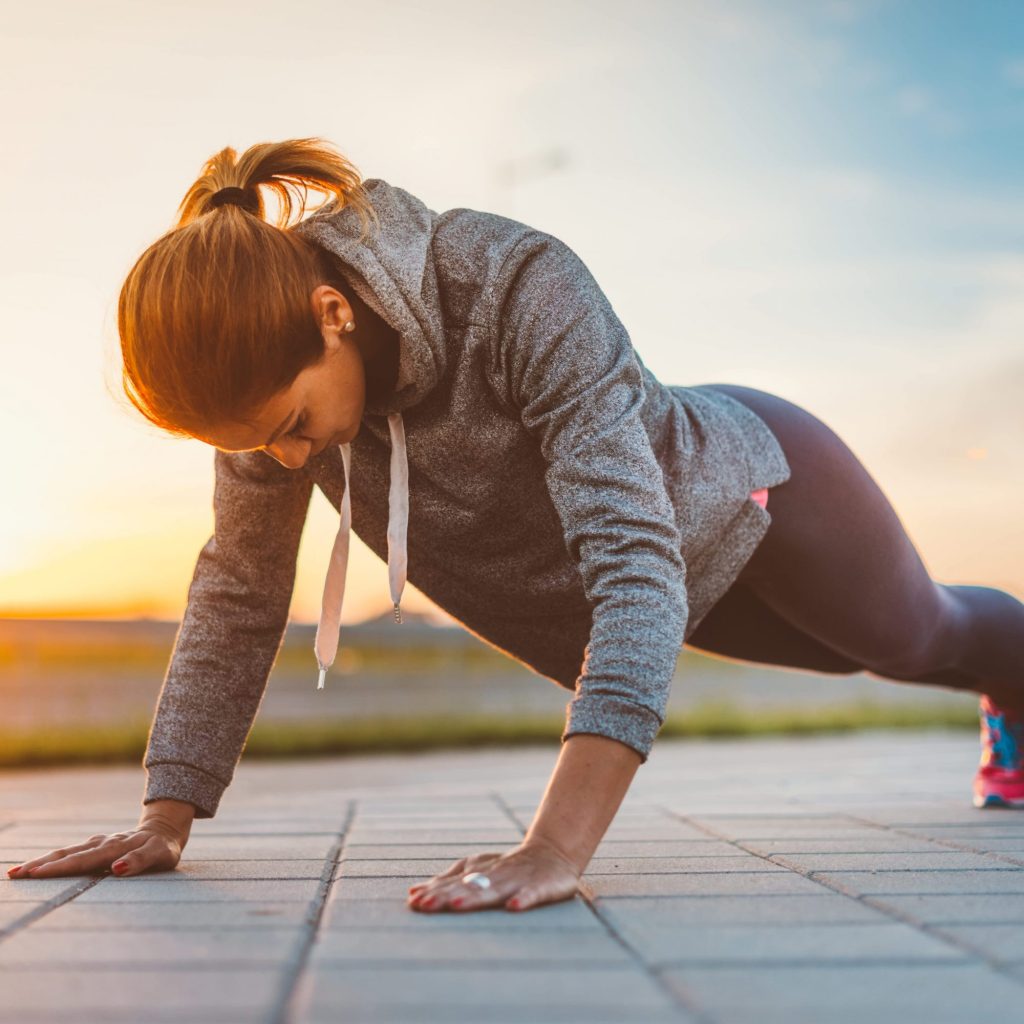“I never avoid a movement – I just figure out how I can perform that movement in a more functional way for my body,” Morgan Rees, an LA-based ACE-certified personal trainer, fitness nutrition specialist, and health coach with fibromyalgia, explains.
The chronic condition can make maintaining an active lifestyle challenging – a reality Rees knows all too well – but, she can’t stress enough how important it is to keep moving.
In Rees’ case, her muscles can become rigid and inflamed, and her skin can be sensitive to touch due to extra nerve endings, reduced blood flow, and even neuropathy brought on by fibromyalgia. She admits that her muscles are sore every time she works out.
That kind of all-over pain is never 100 percent avoidable, Rees says – but she’s learned to listen to her body and adjust her fitness routine accordingly. This means, stretching before and after every workout, avoiding exercises that could trigger her back pain (the most sensitive part of her body), and taking hot Epsom salt baths after gym sessions.
For Rees, her symptoms are most heightened in the morning, which she says can be common after staying sedentary for too long. That’s why Rees likes to work on weight lifting and mobility and flexibility training after she wakes up. Not only does it provide her with a boost of energy, it promotes blood and oxygen flow, too, making her feel “less captive” to her disorder.
While each case of fibromyalgia is individual to the person, Rees offered up three of her favorite exercises to inspire others with the condition to get active and feel better. Just remember to consult with your doctor before executing, always be kind to your body, and stick with whatever methods work best for you.
Deadlifts
Deadlifts – which target lats, forearms, hamstrings, glutes, core stabilizers, and back stabilizers – can be done with a barbell, trap bar, kettlebell, or free weights, Rees explains. She recommends starting low in weight to make sure you can do the form properly.
- Stand with your feet hip-width apart.
- Keep the weight closer to your body. If it is too far away to start, you will immediately feel pressure in your lower back.
- Drive your hips back – not downward.
- Keep tension in the lats with your shoulders down and back.
- Push your heels into the floor as you lower the weight towards the ground.
- Your back must remain straight the entire time.
- Go only as low as your flexibility allows in your hamstrings and come back up to starting position.
- Repeat for two to three sets of 12 to 15 reps each.
Bodyweight Squats
Rees highly recommends putting a box underneath you that allows you to sit at a 90-degree angle when executing this move. If you do not have a box, use a bench that has the same effect.
- Make sure your hips, knees, and toes are in alignment.
- As you stand up, double-check to make sure your knees do not cave inwards.
- Rees often tells her clients to “spread the ground apart with your feet” on the way up and down. You will feel this more on the side of your legs.
- Make sure you push through your heels as you stand up.
- She does not recommend adding weight to your upper back with a bar because it can influence a lot of shoulder and neck inflammation.
- Repeat for two to three sets of 12 to 15 reps each.
Push-ups
Rees urges everyone to start on your knees with your hips forward in alignment with your core if you have not been practicing proper form during a push-up.
This movement involves the chest, serratus, core stabilizers, and lats, Rees explains.
- For the most basic push-up stance, place your hands about shoulder-width apart directly under the shoulders.
- Engage your core by clenching your glutes. This will drive your hips forward and into a stable position.
- When you lower yourself to the floor, make sure your elbows are at a 45-degree angle and not directly out to the side. This will involve more chest muscles.
- Your hips and core should not sag during this movement.
- Rees recommends two to three sets of as many reps as you can do properly. Over time, you will increase your rep count, which is individual each person.

